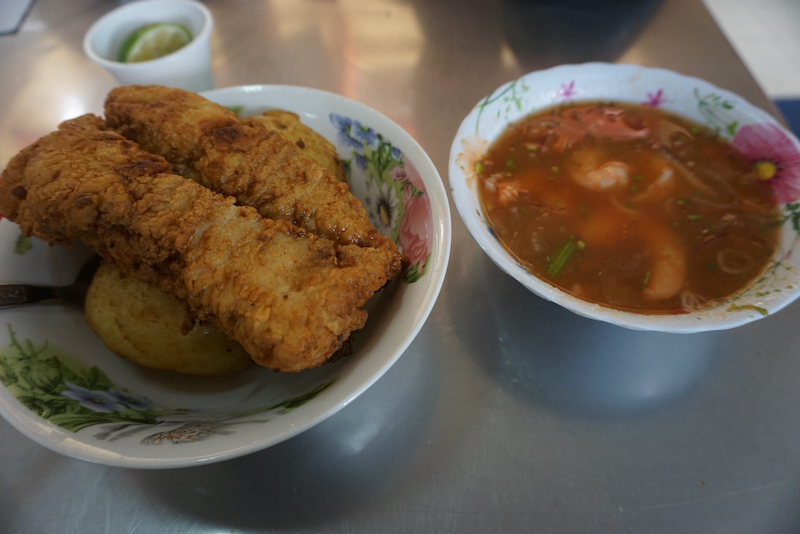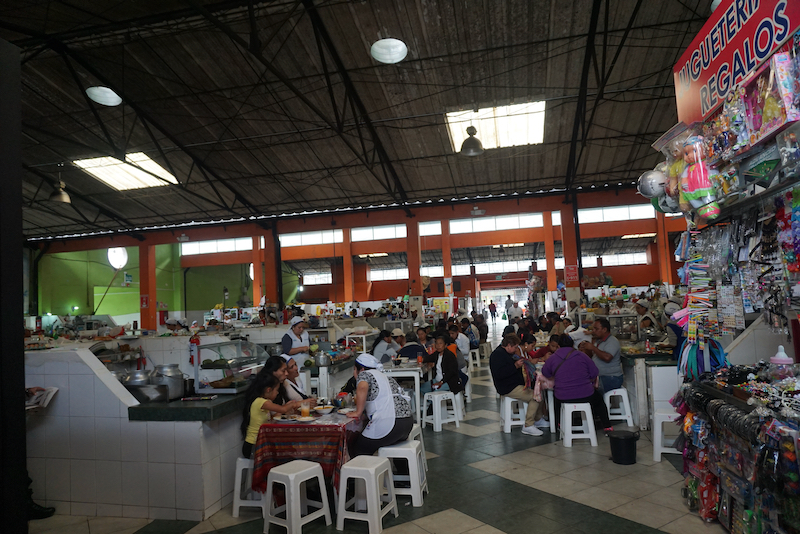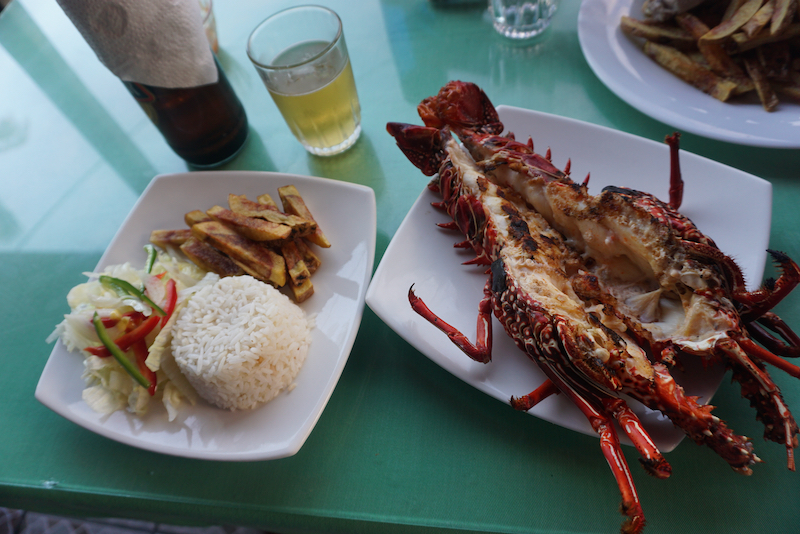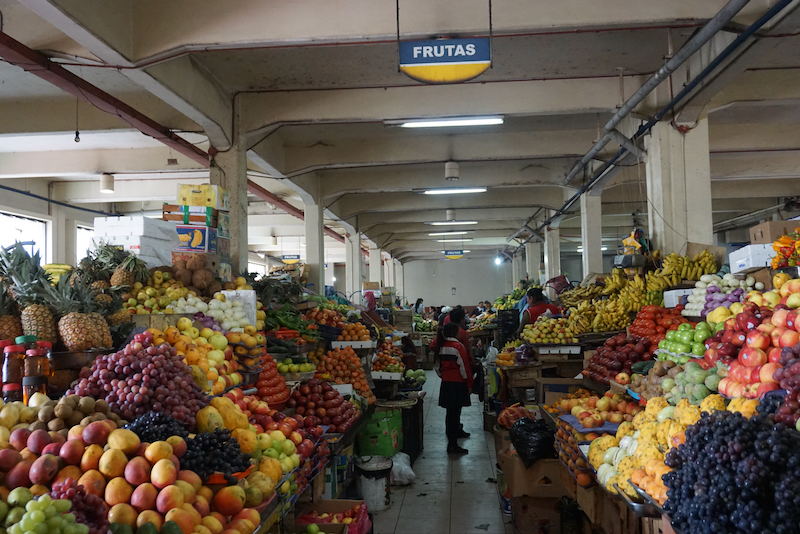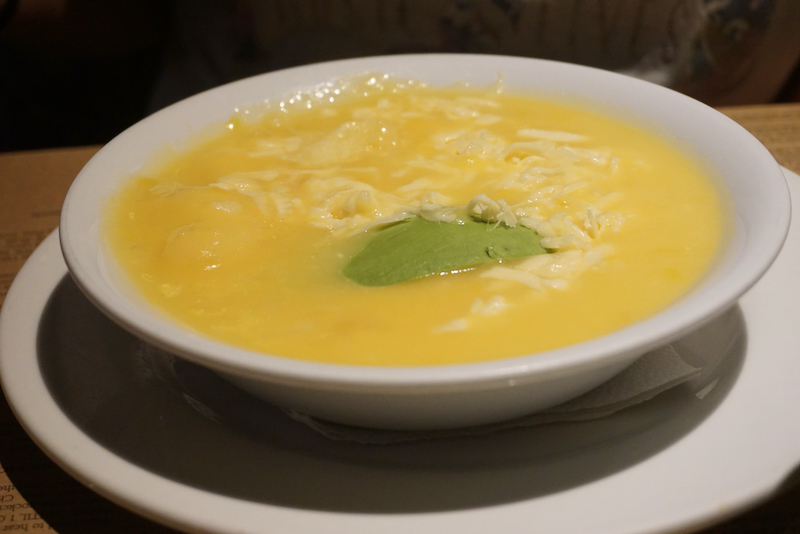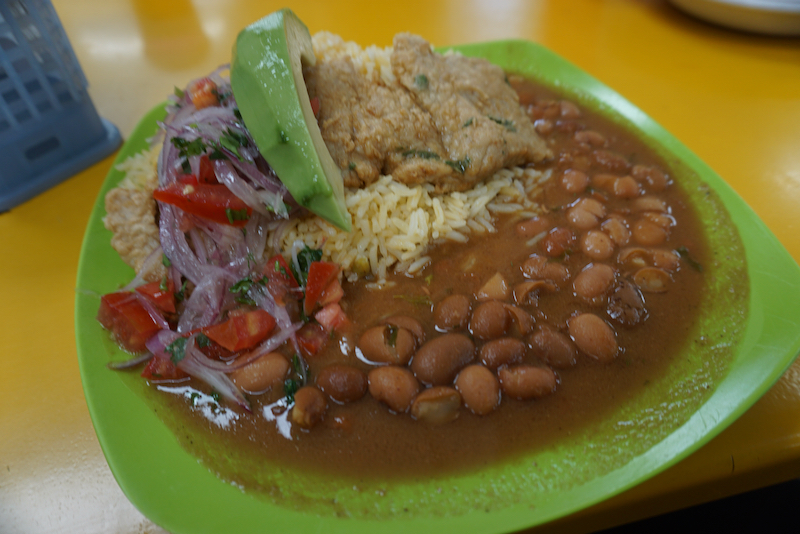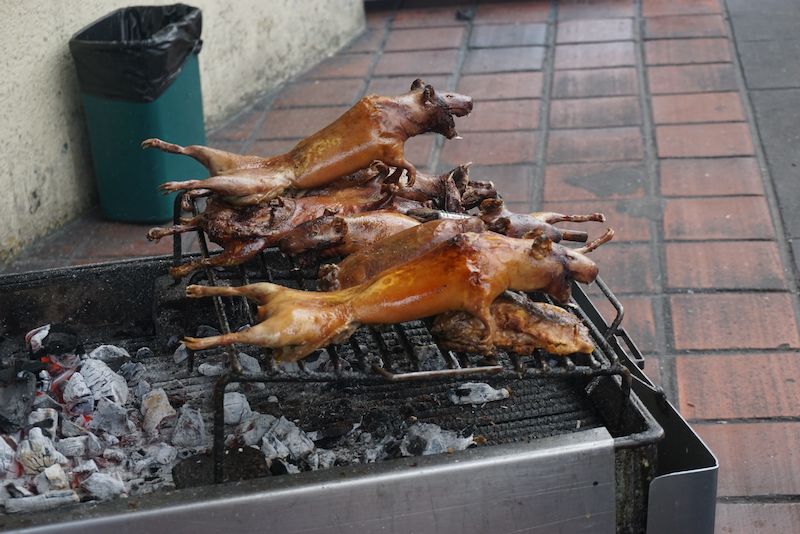¿Cómo es la comida ecuatoriana? Posted by sasha on Apr 28, 2021 in Food, Spanish Culture
La comida es muy importante (Food is very important). After all, you’ve gotta eat! That’s why we love talking about food here on the Spanish blog. Me encanta probar comida nueva cuando viajo (I love trying new food when I travel). I also love introducing food from Spanish-speaking countries to our audience here. You can go back and read my posts about Mexico, Peru, Colombia, and Chile in case you missed them. Today I’ll answer the question “¿Cómo es la comida ecuatoriana?” (What’s Ecuadorian food like?).
An Intro to Ecuadorian Cuisine
Ecuador es un país pequeño, pero la comida es muy diversa (Ecuador is a small country, but the food is very diverse). Esto se debe en Ecuador se encuentran cuatro regiones – la costa , la sierra , la Amazonía y las Islas Galápagos – con ingredientes y tradiciones diferentes (This is because in Ecuador there are four regions – the coast, the mountains, the Amazon and the Galapagos Islands – with different ingredients and traditions).
Wherever you go in Ecuador, there are some common ingredients: plátanos, papas, yuca, arroz y frijoles (plantains, potatoes, yuca, rice, and beans). Ecuador is a major exporter of bananas, so they are a very important crop. There are actually several different types of bananas used in Ecuadorian cuisine. This includes oritos (sweet baby bananas) in addition to the plantains that are very common in cooking.
What you eat with these staple dishes depends on the region. Por ejemplo, los mariscos son muy populares en la costa (For example, seafood is very popular on the coast). You’ll find just about any kind of seafood in Ecuador: pescado (bagre, atún, mero, corvina, pargo), camarón, concha, calamar, cangrejo, langosta, langostino, ostiones, pulpo y mas (fish (catfish, tuna, grouper, sea bass, snapper), shrimp, shell, squid, crab, lobster, prawn, oysters, octopus and more).
You can still find good seafood in the mountains and cities but it’s obviously not as fresh. There you’ll find a lot more meat: cerdo, pollo, res y cuy (pork, chicken, beef and guinea pig). More on that later…
It’s common here to have a bigger 3-course meal in the afternoon: sopa, segundo, y postre (soup, main, and dessert). All over the country, soup is a popular choice at any time of the day. As you might expect, different regions have different styles of soup that are popular. A nice hearty bowl of soup is especially nice up in the cooler mountainous regions.
For those who like it a bit picante, you’ll be happy to hear that the ají pepper is very common. You can always find some hot sauce made from it to spice up your dish a bit.
Common Ecuadorian Dishes
Now that you know a bit about Ecuadorian cuisine and the different regions, let’s take a look at some common dishes across the country:
Locro de papa
El locro es una sopa cremosa hecha a base de papas y queso (Locro is a creamy soup made from potatoes and cheese). Sound delicious? That’s because it is! It comes with different garnishes depending on where you get it. Mi favorito es con pollo y aguacate (My favorite is with chicken and avocado).
Patacones
These fried green plantains are wildly popular all over Ecuador. Se ideales como entrada o acompañamiento de diferentes platos (They are ideal as a starter or accompaniment to different dishes). Crispy and salty, I personally love them with a nice bowl of guacamole. These tasty little morsels are also known as chifles.
Hornado
El hornado es un plato tradicional Ecuatoriano de chancho asado al horno en un adobo (Hornado is a traditional Ecuadorian dish of oven-roasted pork in a marinade). The name of this dish comes from the Spanish word for oven (horno). It’s a whole slow roasted pig and it’s absolutely delicious! It always comes with a starch (usually potatoes), some corn, and maybe even a little side salad.
Llapingachos
Los llapingachos son un plato típico de la región andina central de Ecuador (Llapingachos are a typical dish from the central Andean region of Ecuador). They are basically little fried potato balls, which are often stuffed with cheese. Are you drooling yet?
Encebollado de pescado
El encebollado de pescado es una sopa típica de la región costeña (Fish cooked with onions is a typical soup of the coastal region). This fish stew is actually regarded as a national dish of Ecuador. Se prepara con albacora o atún fresco, yuca, cebolla, tomate, cilantro, y condimentos (It is prepared with fresh albacore or tuna, cassava, onion, tomato, coriander, and seasonings). It’s so popular that it’s eaten for all three meals of the day!
Ceviche de camaron
Unlike in neighboring Peru, the ceviche in Ecuador is typically made with shrimp instead of fish. It’s also often poached, which is good news for those who want to try ceviche but don’t enjoy raw seafood. Another interesting thing about Ecuadorian ceviche is that it’s usually eaten with canguil (popcorn).
Cuy
If you keep a guinea pig as a pet, you may want to skip this part of the post. While they may be pets for many North Americans, they are a delicacy down in South America. The most popular way to cook it is to barbecue it whole. Just be prepared for this sight while perusing markets in Ecuador. You typically have to order a whole one and they aren’t exactly cheap, which kept us from trying it on our travels.
Guaguas de pan y colada morada
It’s not just Mexico that celebrates Day of the Dead. In Ecuador, it’s known as Día de los Difuntos (Day of the Deceased) and there are two very important foods associated with it. Guaguas de pan has an interesting name, which technically means “baby bread.” That’s because this sweet bread is shaped and decorated to look like a small child. They are eaten along with a cup of colada morada, a thick purple drink made with fruit and spices.
I hope you enjoyed this post about Ecuadorian food, and I’m sorry if your stomach is rumbling now! Before you go, try to answer these quick questions:
¿Has probado la comida ecuatoriana? ¿Qué comiste? ¿Te gustó?
Have you tried Ecuadorian food? What did you eat? Did you like it?

Build vocabulary, practice pronunciation, and more with Transparent Language Online. Available anytime, anywhere, on any device.



